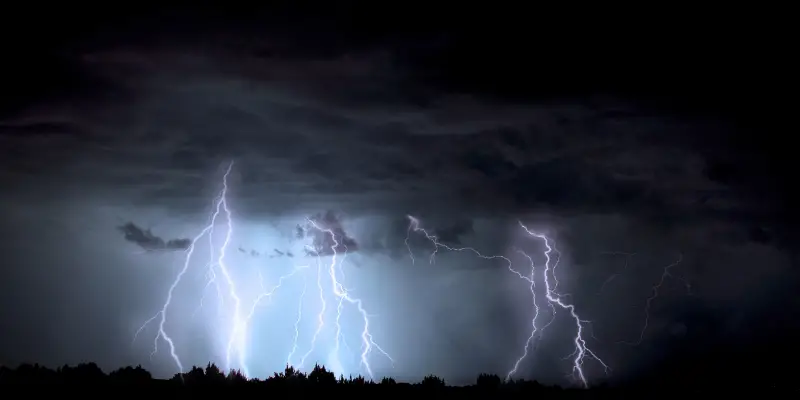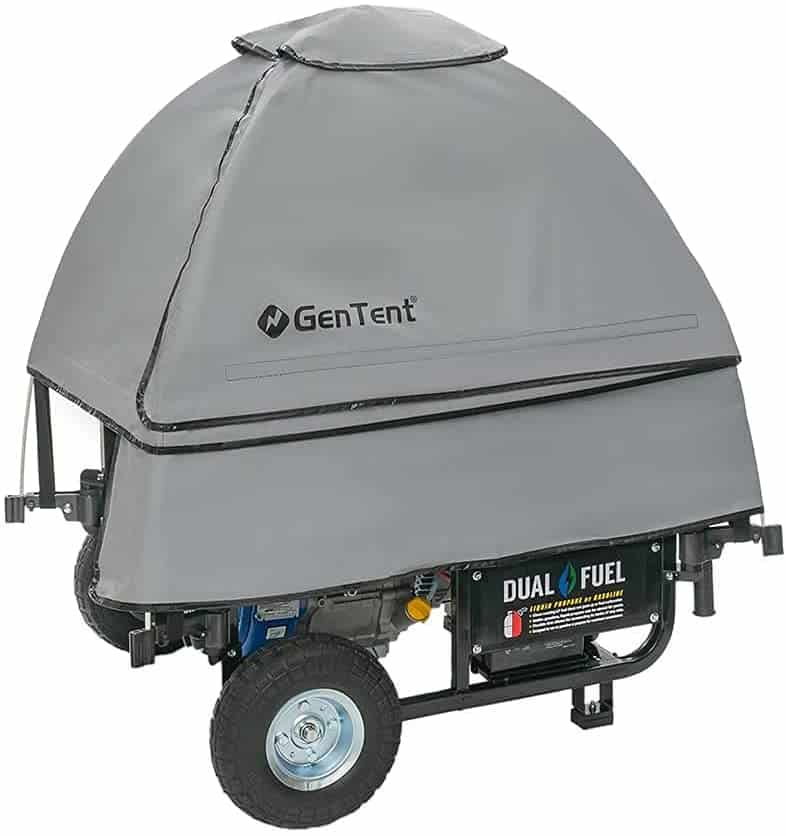A portable generator is a life-saving piece of equipment for those who live in areas with severe weather conditions like rain, storm, or hurricanes. Extended power outages are not something new for those people. They depend on a portable generator to charge the household electric appliances, like electric heaters and stoves to keep them warm and mobile phones to keep them connected with their loved ones.
Here, I will tell you where to put the generator during a storm, and how to use it in extreme weather conditions.
During a storm, it is essential to put your generator in a safe place, preferably at least 20 feet away from your home, and take all the possible precautions to avoid any dangerous situation. In case of any negligence from your side, your most needed life-saving equipment might seriously harm you, or in some conditions, it can be life-threatening too.
This means you cannot take the risk of leaving out the generator just running outside in the storm.
Table of Contents
How Can You Use the Generator Safely During a Storm?

Our readers should know how dangerous it could be to place a portable generator inside homes in a storm; now, they will also safely learn how to use it during a storm or extreme weather conditions. Your learning can keep you protected from any dangerous or fatal accident.
Prepare the generator ready to be used in a storm
When you know that a storm is approaching, it is crucial to check your generator and prepare it for the worst. Make sure if it is working correctly (Important). Connect some of the appliances to it. Next, check its fuel tank. Empty the fuel tank and dispose of it properly. Fill the tank with new fuel. Please turn it off and cool it down. Also, you must check the fuel lines for any cracks. If needed, replace them. Don’t take a risk! Never refuel a running or a hot generator.
Your generator may also be due for an oil change. You shall store extra gasoline before the storm season sets in. you will need extra fuel on hand when you believe you will use the generator for a longer time. It is crucial to store the gasoline in an ANSI-approved container in a cool place that is also well-ventilated. You can add a stabilizer to the gas in the can but do not keep the can near heat or fire. You should store it in your warehouse.
Also, make sure to read the instructions provided on your generator by the manufacturer. In case of any confusion, contact the number provided on it.
Never neglect the instructions provided by the manufacturers for an earthling, connecting the appliances, and storing them. This prep is to make sure that your life-saving companion is ready to help you out in a storm.
You can buy tents for generators—that keep them shielded but still well-ventilated—online and at home centers and hardware stores.
Install a transfer switch
Before the next storm strikes your city, install a transfer switch—the transfer connection costs $500 to $900.
What is the purpose of a transfer switch?
A transfer switch links the portable generator to the circuit panel. It gives power to hardwired appliances while minimizing the safety risk of using extension cords. We recommend you use heavy extension cords to use the generator in storms. Pick an extension cord that is specially designed for use and severe weather conditions. Check the cuts or tears before paying for it.
If you do not have installed a transfer switch till now, and the stormy season is about to set in, the outlets on the generator can also be used for the same purpose. Connect the appliance directly to the generator.

Do not connect a generator directly to the home wiring
Most of them connect the generator directly to the wiring of their homes. This is a common yet big mistake. It is extremely dangerous because it will ‘back feed’ into power lines when the power is resumed. This cannot only damage the generator but, in case of cases, also ignite a fire. It is a big-time safety hazard for you and your loved ones. So when it storms, never connect the generator directly to the home circuit.
Besides, according to OSHA, households shall never connect a portable generator directly to the structure of a home in the absence of a qualified electrician. The qualified electrician would install a transfer switch onto the generator, and you can operate it afterward.
WDon’t Use a Generator Inside the House
Using generators inside your home, either in a storeroom, basement, or garage, is highly discouraged. The reason is given by the Consumer Product Safety Commission, which says that a portable generator produces carbon monoxide gas and can harm people within minutes.
A report published by the National Institute of Standards and Technology (NIST) concludes that each year more than 20,000 people are brought to the emergency rooms of hospitals due to excess inhalation of carbon monoxide gas.
When investigated, it was found that these households had kept generators inside their homes in every kind of weather condition. Another CPSC report published in 2012 says that almost 85 percent of non-fire carbon monoxide deaths are due to the generators releasing it in the air. So if you are thinking of storing your generator inside your house, do not do it.
Keith Pinkerton is a franchise owner of Mr. Electric, which is a global-level electrical service business. According to Keith Pinkerton, households with a portable generator kept for emergencies shall place it at least 30 feet away from the house, even in the rain or storm. There is minimal possibility of emission of carbon monoxide gas inside the dwelling. Carbon monoxide is a slow poisoning that is odorless, colorless, and tasteless. Before we know about it, it kills us silently.
Some Safety Tips
The Occupational Safety and Health Administration (OSHA) suggests that a portable generator is not less than a blessing in regions with severe weather conditions. In case of a storm, the generator shall be kept in a dry place or at least properly covered, where it has a clear space of at least 3 to 4 feet on all sides. This ensures the proper ventilation of the carbon monoxide gas. You can purchase a waterproof tent for a generator.
A waterproof tent not only keeps the generator protected but also well-ventilated. A generator tent or a canopy is a must-buy for keeping the generator protected during a storm, rain, or hurricane because the rain can permanently damage the generator. If not completely damaged, if the rainwater gets into the outlets, it might result in an explosion. So when you need it to switch ON the appliance and keep yourself warm or stay connected with the outer world, it will not operate.
Heavy rain, storms, and snow are a form of nature. They cannot be avoided in any case. However, we shall be fully prepared to welcome them. The waterproof covers, tent, or canopy for your generator comes in different sizes and different materials in the market.
Tent/Canopy
You can purchase tents for your generator from a home store or any hardware store in the nearby market. These specially designed tents for generators and a canopy do not indulge in the operations of a generator and its mobility.
A portable generator is meant to be easily moved when needed, and this purpose is not altered with a canopy. It can be easily installed and fulfills its purpose. While most readers might think that covering a generator with a tent or a canopy might heat it, this is not the case. The generator will not overheat because the tent/canopy is designed to maintain the airflow and promote natural cooling.
These generator covers can cope up with strong winds of storms and hurricanes. You should invest in a generator canopy or a tent to live in the windy weather even if there is zero power supply.

ALSO READ: What Kind Of Oil Does a Generator Use?
Conclusion
Concluding that a portable generator is a life-saving equipment for those living in areas of extreme weather conditions. People usually bring portable generators inside the home or basement in rain and storm, but this is dangerous.
The release of carbon monoxide is a silent killer. It is advised to keep the generator at least 20 feet away from your home. In case of rain or storm, cover it with a waterproof tent or a canopy. It prevents the generator from getting damaged with rainwater and allows mobility while letting it run smoothly.

